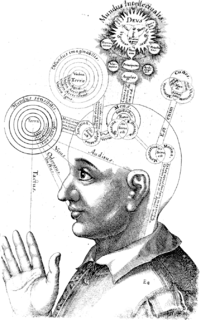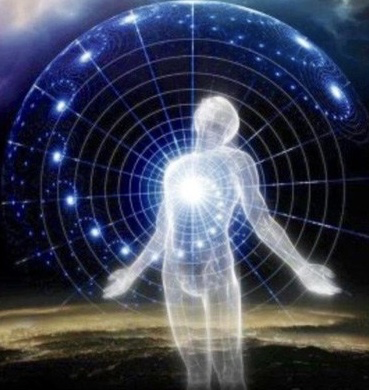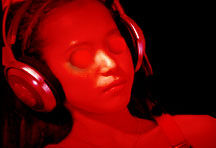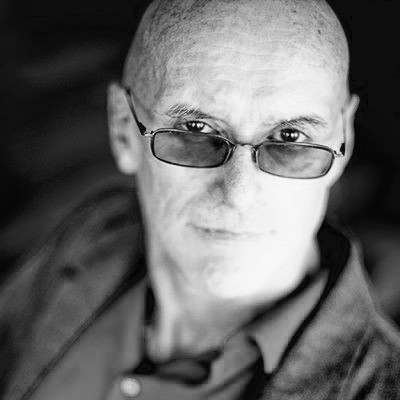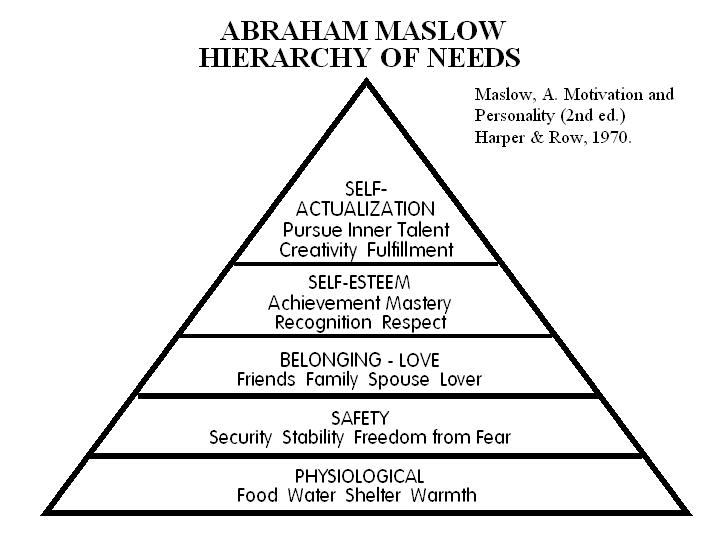Benefits of Transpersonal Psychology, both theoretically and practically for the Parapsychologist.
With a mixture of great civil unrest within western society and the increasing frustration with the two dominate fields of psychology, the middle of the twentieth century could be seen as both the age of the social and psychological revolution. While a rapid social change took place within North America in the 1950s and 1960s with the growing anti-war and civil rights movements, a similar movement was starting to take place within the field of American psychology. Dissatisfaction with the main approaches used in psychology (Behaviourism and Psychoanalysis) to try and explain the human psyche, a number of researchers and psychologists (Abraham Maslow, Clark Moustakas, Carl Rogers and Anthony Sutich) called for a new psychological perspective to be created, one that would take into account the phenomenological aspects of human issues and human lived experiences (such as love, creativity and individuality); and so the field of Humanistic psychology the third force (Maslow, 1962) was formed.
Although extremely popular at first, by the mid-1960s it had become apparent that this third force of psychology had excluded an important element that was increasingly bring more attention to itself during the age of psychedelic experimentation and raised interests in Eastern culture and philosophy; the element of Human Spirituality.
Although extremely popular at first, by the mid-1960s it had become apparent that this third force of psychology had excluded an important element that was increasingly bring more attention to itself during the age of psychedelic experimentation and raised interests in Eastern culture and philosophy; the element of Human Spirituality.
|
Instead of including this spiritual aspect within humanistic psychology, a small group of individually (James Fadiman, Stanislav Grof, Abraham Maslow, Sonya Margulies and Miles Vich) development a new Forth force, one that would investigate the processes of spiritual and transcending experiences and the events that can prompt individual to surpass their sense of self; Transpersonal Psychology.
“Could it be that the localized consciousness with which we are intimately familiar and which we know as our "ego"--the convincingness of locality and individuality--is simply a quirk of our ordinarily limited attention? And could a shift in attention reveal the extended range of our true, nonlocal consciousness, allowing direct knowing and direct mental influence of "remote" events?” (Henri Bergson, 1935) |
At the same time that transpersonal psychology was starting to emerge, parapsychology with the support of researchers such as Joseph Banks Rhine (1895-1980) had developed from psychical research, (investigated by high class societies) into a young scientific discipline, studied in the quantitative environment of the university laboratories. The Parapsychological Association was formed and in 1969 it became affiliated with the American Association for the Advancement of Science.
With aspects of transpersonal psychology, studying human spiritual experiences (self-transcendent) and aspects of parapsychology studying human experiences of spirits (hauntings) one can see how these two separate fields could be, at times mistaken as being elements of the same discipline. Though they do share some common areas of research which can overlap (e.g. research on alternative states of consciousness; Transpersonal psychology to help facilitate spiritual self-development, Parapsychology to help facilitate psi performance) these two scientific cousins are very much different in their theories, approaches and methodologies. This paper will be discussing some of the similarities and differences between transpersonal psychology and parapsychology and also examine how research and practices of transpersonal psychology could be beneficial to the field of parapsychology.
Although these two disciplines do share a number of common aspects such as; they both investigate different states of consciousness, as environments that can facilitate unusual and unexpected phenomena, they both deal in areas that study perceptual human experiences (e.g. cosmic consciousness experiences, near death, alien abduction, out of body experiences) and that they both call into question the materialist metaphysic view of human nature and highlight alternative observations on the workings of the human mind.
With aspects of transpersonal psychology, studying human spiritual experiences (self-transcendent) and aspects of parapsychology studying human experiences of spirits (hauntings) one can see how these two separate fields could be, at times mistaken as being elements of the same discipline. Though they do share some common areas of research which can overlap (e.g. research on alternative states of consciousness; Transpersonal psychology to help facilitate spiritual self-development, Parapsychology to help facilitate psi performance) these two scientific cousins are very much different in their theories, approaches and methodologies. This paper will be discussing some of the similarities and differences between transpersonal psychology and parapsychology and also examine how research and practices of transpersonal psychology could be beneficial to the field of parapsychology.
Although these two disciplines do share a number of common aspects such as; they both investigate different states of consciousness, as environments that can facilitate unusual and unexpected phenomena, they both deal in areas that study perceptual human experiences (e.g. cosmic consciousness experiences, near death, alien abduction, out of body experiences) and that they both call into question the materialist metaphysic view of human nature and highlight alternative observations on the workings of the human mind.
|
Parapsychology and transpersonal psychology also both deal with issues of a spiritual nature, though the meaning of this word is implied differently. Spiritual to a parapsychologist could be viewed as either an interaction or experience with a spirit (haunting) or as in the meaning of spiritualist, (a medium or psychic experience).
For a transpersonal psychologist the word spiritual could mean a spiritual or peak experience; an ego-transcending joyful experience, when knowledge and awareness of a higher truth is felt and the reality of the world is perceived in an altered and profound way. “The attempt to be in harmony with an unseen order of things” (Williams James, 1902) |
They also have clear differences as well; when parapsychology first started its own transformation to establish itself as a scientific discipline in the 1930s, in order to try and gain acceptance and status from the mainstream sciences, it severed certain aspects found within the original field of psychical research that it considered would not be suitable, such as its links with religion. Whereas in transpersonal psychology this aspect has an influential position, as many religious traditions and practices (e.g. Vipassana and metta meditation, The Yogas, Shamanism, mysticism) are used to bring unconscious images and information from the self into the conscious area of the ego, in order for one to expand ones self-identity. (Wilber, 1997)
A large number of researchers in parapsychology are also reluctant to advocate the paranormal phenomena that they are studying and use terms such as ‘anomaly’ to try and increase recognition and acceptance from other disciplines, (Tart, 2002) choosing to lean towards a more evidential position.
A large number of researchers in parapsychology are also reluctant to advocate the paranormal phenomena that they are studying and use terms such as ‘anomaly’ to try and increase recognition and acceptance from other disciplines, (Tart, 2002) choosing to lean towards a more evidential position.
|
While transpersonal psychologists strongly promote the benefits of transformation and support the emphasis; that as a student of transpersonal psychology one’s own experiential learning is important (Daniels, 2005) for field understanding.
Furthermore paranormal phenomena could be seen as the main driving focus for a parapsychologist, collected data concerning its existence and processes, whereas in practices of transpersonal psychology (E.g. yoga meditation) there are aspects of paranormal phenomena experienced (Vibhuti or Siddhi experiences) but these experiences are not the main focus of the excise, it is just another stage that needs to be crossed in order to research enlightenment (Samadhi). |
From looking at these similarities and differences between the two fields it shows that transpersonal psychology’s framework lies within the meaning and personal significances of the experience whereas the interests of parapsychology lies within the information and statistical significance of the experience (Daniels, 2005). Though to examining these approaches together and how they could interact with each other could be displayed by using the quadrant model created by Ken Wilber (1995) which was developed to emphasise that a phenomenon has both an individual and collective interior and exterior aspect, and that in order for the phenomenon to be fully understood all four quadrants need to be observed.
To apply this to Transpersonal and Parapsychology the former could be seen as primarily ‘interior-individual’,due to in phenomenological elements of its field and the latter as‘exterior-individual’, due to its public data validation processes. In order to complete the four quadrant model cross integration; the two disciplines could be used to both validity and acknowledge the value of the others research contributions. (Daniels, 2005)
This validity could take the form of; parapsychological research being used to help ground the speculations and theories of reality proposed by transpersonal psychology (such as research on telepathy and psychokinesis could support the theories found in various religious and spiritual traditions e.g. miracles or healing) (Tart, 2004) Also as parapsychology is the discipline that focuses mainly on the basic nature of the phenomena such as certain aspects or abilities of the human mind (e.g. extrasensory perception (ESP) it can help discover new areas of research that could open new possibilities for transpersonal psychology (e.g. psi missing). Furthermore transpersonal psychology could support parapsychology by offering meaningful psychological and spiritual reasons for the psi phenomena experienced by an individual, as an examination of the experience could bring new insight into the phenomena. (Tart, 2002)
To apply this to Transpersonal and Parapsychology the former could be seen as primarily ‘interior-individual’,due to in phenomenological elements of its field and the latter as‘exterior-individual’, due to its public data validation processes. In order to complete the four quadrant model cross integration; the two disciplines could be used to both validity and acknowledge the value of the others research contributions. (Daniels, 2005)
This validity could take the form of; parapsychological research being used to help ground the speculations and theories of reality proposed by transpersonal psychology (such as research on telepathy and psychokinesis could support the theories found in various religious and spiritual traditions e.g. miracles or healing) (Tart, 2004) Also as parapsychology is the discipline that focuses mainly on the basic nature of the phenomena such as certain aspects or abilities of the human mind (e.g. extrasensory perception (ESP) it can help discover new areas of research that could open new possibilities for transpersonal psychology (e.g. psi missing). Furthermore transpersonal psychology could support parapsychology by offering meaningful psychological and spiritual reasons for the psi phenomena experienced by an individual, as an examination of the experience could bring new insight into the phenomena. (Tart, 2002)
|
One way that certain spiritual practices have already assisted research within parapsychology is that of the development of the Ganzfeld procedure by Charles Honorton (1977a/b). Honorton observed that students of the Patanjali's Yoga Sutras that research the last three stages towards enlightenment (Samyana) found that they could experience paranormal phenomena such as pre-cognition or clairvoyance.
|
On examining the first five stages of the Sutras he noticed that they all described the reduction of emotional and sensual attachment, and that this process allowed the students to quiet the consent chatting of the minds and focus inward. Using this information Honorton designed the Ganzfeld procedure; an experiment that exposes the participant to mild sensory restrictions by using unpatterns visual and auditory stimulation. From using this technique and incorporating a free ESP response test, enhanced paranormal and increased measurements of psi performance was observed. (Braud, 1992)
Also aspects of transpersonal psychology may have supported parapsychology in a more important way than just the validation of data; as in 2001 Charles Tart released the results of a questionnaire study he had conducted on full and associate members of the Paranormal Association concerning questions of a spiritual nature. Of the questionnaires sent out he received a 48% return rate, (just under half the associations register) Regarding the first question which asked the members if they had enter into the field of parapsychology due to ‘spiritual’ interests or motivations (making sure not to give a specific definition of the word spiritual to increase his chances of provoking a strong reponse) of the 48% returned, 36% responded yes to this question, showing that however defined, spiritual motivations was a common reason within the study group for becoming a parapsychologist.
The next question asked if the member’s current work primarily comes from spiritual motivations, this gave a yes response rate of 34% and the last question asks if they felt that there was a significant conflict between their experimental research work in parapsychology and their spiritual motivations, this question received a 26% yes response rate. (Tart, 2002) From these results it shows that for many individuals, spiritual motivations or experiences can be a driving force that can spark an interest in paranormal phenomena and direct an individual into an academic field of research.
Also aspects of transpersonal psychology may have supported parapsychology in a more important way than just the validation of data; as in 2001 Charles Tart released the results of a questionnaire study he had conducted on full and associate members of the Paranormal Association concerning questions of a spiritual nature. Of the questionnaires sent out he received a 48% return rate, (just under half the associations register) Regarding the first question which asked the members if they had enter into the field of parapsychology due to ‘spiritual’ interests or motivations (making sure not to give a specific definition of the word spiritual to increase his chances of provoking a strong reponse) of the 48% returned, 36% responded yes to this question, showing that however defined, spiritual motivations was a common reason within the study group for becoming a parapsychologist.
The next question asked if the member’s current work primarily comes from spiritual motivations, this gave a yes response rate of 34% and the last question asks if they felt that there was a significant conflict between their experimental research work in parapsychology and their spiritual motivations, this question received a 26% yes response rate. (Tart, 2002) From these results it shows that for many individuals, spiritual motivations or experiences can be a driving force that can spark an interest in paranormal phenomena and direct an individual into an academic field of research.
|
For a parapsychologist to understand the theoretically aspects of transpersonal psychology this could allow them to complete certain unanswered questions concerning psi research (such as; what triggers alternative states of conciseness and why does this effect psi performance? Or why does an individual’s belief influence psi performance?) Though with its struggle for acceptance, parapsychology has allow itself to be limited to the boundaries set by scientific methods, which might be satisfactory in studying aspects of the materialist realm but may not be so fitting in studying aspects in the spiritual realm.
This can be illustrated by Wilber (1990) three eyes model; the eye of the flesh (physical, sensory realm), the eye of the mind (ideas, mental realm) and the eye of the spirit (transcendental, spiritual realm). To understand all of reality is to understand and accept all the eyes (as each eye holds different aspects of reality and what is held by one eye may not by revealed to the others) and not allow anyone to dominate over the others. |
In transpersonal psychology interconnection between all things is fundamental, to transcend is to go beyond yourself, to reach out to all that is around you and to be one with the universe and life, but this view to the materialistic scientism is unacceptable as they regard life in terms of fundamental isolation, where only indirect communication is possible through the individual’s motor behaviour and senses. Although research of psi phenomena by parapsychologist has demonstrated that there is not a complete isolation between life;
‘The findings of experimental parapsychology suggests that the human mind can do things, can reach through space and time, in ways that human brains and bodies, alone, conceived as purely physical organs, cannot do’….’processes exist that cannot be adequately encompassed by our current scientific framework nor fully addressed by current scientific methodologies’
(William Braud, 1995)
‘The findings of experimental parapsychology suggests that the human mind can do things, can reach through space and time, in ways that human brains and bodies, alone, conceived as purely physical organs, cannot do’….’processes exist that cannot be adequately encompassed by our current scientific framework nor fully addressed by current scientific methodologies’
(William Braud, 1995)
|
Braud (1995) examine this concept between parapsychology and spirituality and found that from the spiritual tradition of faith, hope and love (observed in many religious practices) many know psychic function arranged themselves into the same categorises; Faith which is linked to belief and trust, in parapsychology studies research has shown that the presence or absence of psi belief can have an impact to psi performance (e.g. sheep-goat effect) and not only influenced by the participant beliefs but also by the experimenters (e.g. experimenter effect). Hope which is linked to expectation and desire, in PK research has shown that participants are able to manipulate the object to achieve the desire or expected outcome (e.g. dice rolling studies). Love which is linked with positive feelings and motivation can be seen in the parapsychology research into psychic healing.
|
By understanding elements of transpersonal psychology research into various parapsychological topics could be re-examined and refined (e.g. prayer and psychic healing could be re-investigated to look at what type of prey or healing technique give stronger results or what results are achieved for the different types of technique). (Tart, 2002) Research studying near death experiences, out of body experiences or the survival theory all could benefit from exploring the spiritual side of the phenomena, how the experience affected the individual, what were their views before the experience and has there been any change.
These links in research shows that there is a possibility for interconnectabliity between the science and spiritual realms and that together they cannot only help to untangle the mystery surrounding psi but also can help to provide evidence for the unusual and unexpected phenomena experienced while on a spiritual path.
These links in research shows that there is a possibility for interconnectabliity between the science and spiritual realms and that together they cannot only help to untangle the mystery surrounding psi but also can help to provide evidence for the unusual and unexpected phenomena experienced while on a spiritual path.
References
Bergson, H, (1935) The Two Sources of Morality and Religion. New York (pp. 246-247)
Braud, W, (1992) Human interconnectedness: Research indications. ReVision: A Journal of Consciousness and Transformation, 14, 140-148.
Braud, W, (1995) Parapsychology and Spirituality: Implications and Intimations. A Journal of Consciousness and Transformations, volume 18, (1)
Daniels, M, (2005) Shadow, Self, Spirit: Essays in Transpersonal Psychology. Exeter:
Honorton, C. (1977a). Effects of meditation and feedback on psychokinetic performance: A pilot study with an instructor of TM. In J. D. Morris, W. G. Roll, & R. L. Morris (Eds.), Research in parapsychology 1976 (pp. 95—97). Metuchen, NJ: Scarecrow Press.
Honorton, C. (1977b). Psi and internal attention states. In B. Wolman (Ed.), Handbook of parapsychology, New York: Van Nostrand-Reinhold
James, W, (1902/1969) The Varieties of Religious Experience. London: Collier-Macmillan
Maslow, A. H. (1962). Towards a Psychology of Being. Princeton, NJ: D. van Nostrand
Tart, C., T, (2002) Parapsychology and Transpersonal Psychology: “Anomalies” to be Explained Away or Spirits to Manifest? Journal of Parapsychology, 66, 31–47
Tart, C., T, (2004) On the Scientific Foundations of Transpersonal Psychology: Contributions from parapsychology. Journal of Transpersonal Psychology, 36 (1), 66-90
Wilber, K, (1977) The Spectrum of Consciousness. Wheaton, Quest Books
Wilber, K, (1990) Eye to Eye: The Quest for the New Paradigm. Boston: Shambhala
Wilber, K, (1995). Sex, Ecology, Spirituality. Boston, Massachusetts & London: Shambhala
Bergson, H, (1935) The Two Sources of Morality and Religion. New York (pp. 246-247)
Braud, W, (1992) Human interconnectedness: Research indications. ReVision: A Journal of Consciousness and Transformation, 14, 140-148.
Braud, W, (1995) Parapsychology and Spirituality: Implications and Intimations. A Journal of Consciousness and Transformations, volume 18, (1)
Daniels, M, (2005) Shadow, Self, Spirit: Essays in Transpersonal Psychology. Exeter:
Honorton, C. (1977a). Effects of meditation and feedback on psychokinetic performance: A pilot study with an instructor of TM. In J. D. Morris, W. G. Roll, & R. L. Morris (Eds.), Research in parapsychology 1976 (pp. 95—97). Metuchen, NJ: Scarecrow Press.
Honorton, C. (1977b). Psi and internal attention states. In B. Wolman (Ed.), Handbook of parapsychology, New York: Van Nostrand-Reinhold
James, W, (1902/1969) The Varieties of Religious Experience. London: Collier-Macmillan
Maslow, A. H. (1962). Towards a Psychology of Being. Princeton, NJ: D. van Nostrand
Tart, C., T, (2002) Parapsychology and Transpersonal Psychology: “Anomalies” to be Explained Away or Spirits to Manifest? Journal of Parapsychology, 66, 31–47
Tart, C., T, (2004) On the Scientific Foundations of Transpersonal Psychology: Contributions from parapsychology. Journal of Transpersonal Psychology, 36 (1), 66-90
Wilber, K, (1977) The Spectrum of Consciousness. Wheaton, Quest Books
Wilber, K, (1990) Eye to Eye: The Quest for the New Paradigm. Boston: Shambhala
Wilber, K, (1995). Sex, Ecology, Spirituality. Boston, Massachusetts & London: Shambhala


